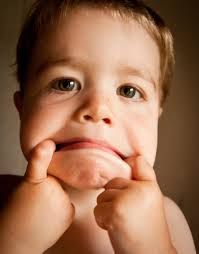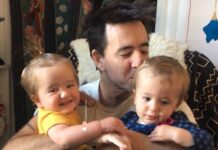In this month’s issue of Psychological Medicine, researchers from King’s College London found evidence for associations between different types of childhood adversity and specific symptoms associated with psychosis. As current categorical approaches to psychosis and schizophrenia diagnoses come under increasing scrutiny, this study adds support to sociological and psychological theories and treatments.
 It is estimated that as many as one in four children in high-income countries suffer from childhood abuse, including sexual abuse and physical abuse, and many more suffer other forms of childhood trauma like the loss of a parent or being placed into foster care. Past research has connected all of these forms of trauma and abuse with detrimental mental health consequences. For example, research has found strong associations between emotional and psychological abuse and a broad range of mental health problems, including depression, anxiety, eating disorders, substance use, and suicidal behavior.
It is estimated that as many as one in four children in high-income countries suffer from childhood abuse, including sexual abuse and physical abuse, and many more suffer other forms of childhood trauma like the loss of a parent or being placed into foster care. Past research has connected all of these forms of trauma and abuse with detrimental mental health consequences. For example, research has found strong associations between emotional and psychological abuse and a broad range of mental health problems, including depression, anxiety, eating disorders, substance use, and suicidal behavior.
Because most studies on psychosis use traditional diagnostic categories, there has been little progress on understanding the relationship between specific forms of abuse and neglect and the various symptoms associated with psychosis. To attempt to fill this gap in understanding, the researchers started by moving away from diagnostic categories for schizophrenia and instead utilized distinct symptom profiles.
Using data from a broad cross-section of patients presenting with their first episode of psychosis, they examined the associations between physical abuse, sexual abuse, parental separation, parental death, and being put in institutionalized care in childhood and specific symptom profiles. These symptom profiles, based on previous work by Wallwork et al. (2012), include positive symptoms (delusions, hallucinatory behavior), negative symptoms (blunted affect, emotional withdrawal), disorganization (conceptual disorganization, difficulty in abstract thinking), excitement (hostility), and depression (guilt feelings).
The findings yielded robust connections between childhood sexual abuse, physical abuse and parental separation and the positive symptom dimensions of psychosis. Also, even when controlling for other forms of adversity, being placed in institutional care before age 17, was significantly correlated with the “excited” symptom dimension, which includes hostile behaviors and attitudes, uncooperativeness, and poor impulse control.
The connection between childhood sexual abuse and positive symptoms of psychosis, including hallucinations and delusions, was particularly strong. Additionally, the robust association between parental separation and these positive symptoms strengthens psychological theories and explanations. For example, the result may be explained in terms of attachment theory where a prolonged separation from a parent or caregiver can undermine feelings of security and trigger intense feelings of anxiety and distrust.
“It has been demonstrated that physical abuse, sexual abuse, parental separation and being taken into care before 17 years of age exhibited associations with particular symptom dimensions of psychosis in adulthood independent of important confounding factors and the other types of adversity investigated,” they conclude.
*
Ajnakina, O., Trotta, A., Oakley-Hannibal, E., Di Forti, M., Stilo, S. A., Kolliakou, A., … & Pariante, C. (2016). Impact of childhood adversities on specific symptom dimensions in first-episode psychosis. Psychological medicine, 46(02), 317-326. (Full Text)















Interesting article. There are a lot of this type around at the moment, testifying to the failure of the biomedical model to find any causal pathways at all. However, I do have doubts about these attempts to find, in their words, ‘distinct pathways from specific forms of child abuse to particular psychotic symptoms.’ First: the pathologising, pseudo-medical language, which posits the existence of entities such as ‘psychosis’ which are just as questionable as ‘schizophrenia’ – and which in fact raise even bigger questions of reliability and validity, given their woolly, open-ended nature. These mysterious entities then operate as a kind of intermediary between the event (eg abuse) and the outcome (eg terror, confusion) with the risk of becoming the main focus of ‘treatment’ via meds etc.. Alternatively, as I suggested in ‘Demedicalising Misery’ eds Rapley, Moncrieff and Dillon 2011, we might be brave enough to recognise that ‘There is the abuse, and there are the responses to the abuse. There is no additional “psychosis” that needs explaining.’ Secondly, this kind of research quickly runs into the ‘Everything causes everything, everyone has experienced everything, and everyone suffers from everything’ problems. CA is a risk factor for every psychiatric diagnosis, and conversely, about 20 other factors have also been identified as risks in ‘psychosis’. MH service users who have experienced single adversities are very rare. And the vast majority of people present with a whole range of ‘symptoms’, not just ones that might be designated ‘psychotic.’ Moreover, and not mentioned in any of this research, people may then be subjected to a whole range of re-traumatising ‘treatments’ which exacerbate the original trauma(s). In other words, the picture is way, way more complicated than the researchers seem to hope, not least because of the over riding importance of the construction of meaning in shaping the impacts of any event. How does that fit into the causal picture?
In summary, I think this is an attempt to squeeze the complexity of human experience and human suffering into a primarily positivist, natural science model of causality, and ultimately it just won’t work. We need to get further away from our basic assumptions. Having said that, I would like to see subsequent articles building on the implication that actually, life events and attachments are all we need in order to explain what we call ‘psychosis.’ That really might take us somewhere new.
Report comment
“we might be brave enough to recognise that ‘There is the abuse, and there are the responses to the abuse. There is no additional ‘psychosis’ that needs explaining.’”
I am glad the psychiatric industry is starting to actually recognize the existence of, rather than just profit from covering up, child abuse. I was misdiagnosed and drugged to cover up the abuse of my child, so was not ‘psychotic’ prior to being drugged.
And I agree, ‘There is the abuse, and there are the responses to the abuse.” I was initially in denial of the abuse of my child. But there is an additional “psychosis” that does, in fact, need explaining.
The neuroleptic drugs, when wrongly given to a person dealing with child abuse, can and do create “psychosis,” via neuroleptic or poly pharmacy induced anticholinergic toxidrome. Thus, it is highly unwise, medically speaking, to create a “chemical imbalance” in a person’s brain by putting any non-“psychotic” person on the psychiatric drugs.
What’s curious is my experience seems quite typical to that of many abuse victims who were, likely also wrongly, put on the neuroleptics. In that while on the neuroleptics I got the “voices” of the abusers in my head. Thankfully, the incessant and evil “voices” went away once I was weaned from the psychiatric drugs.
But I was introduced, via a drug withdrawal induced awakening to my dreams, to the concept of the “collective unconscious.” So I do wonder if such a thing does actually exist. And, if in fact it does, whether the neuroleptics actually make it easier, or possible, for the “evil” within the “collective unconscious” to harass the decent. In effect, whether the neuroleptics are not actually, “Satan’s little helper”? That was my experience, at least.
You’ll be glad to known I did quickly get my child away from the child abusers. He did suffer the common symptoms of child abuse initially, but he was able to go from remedial reading in first grade to getting 100% on his state standardized tests by 8th grade. So, it is possible for a child abuse victim to heal, if he is kept away from the psychiatric / psychological / social worker system, and instead given love, encouragement, and time to heal.
Report comment
And pardon my statement of the blatantly obvious. But my experience with psychiatric practitioners was that they believe one’s inner ‘voice of reason,’ in other words common sense, is “millions of voices,” which is ridiculous.
And, they as an industry, are currently publishing a bunch of articles pointing out the blatantly obvious, too. So there does seem to be a need to remind today’s psychiatric industry of what has historically been known to be common sense.
Like, for example, the neuroleptics are “torture” drugs, not “wonder drugs.” It’s stupid to force children to take speed. It’s unacceptable human behavior to make up “mental illnesses,” then defame, torture, and kill other human beings based upon such medical fictions. Pardon my amazement at what I believe to the psychiatric industry’s staggering lack of common sense.
Report comment
yes….when you take someone who is going through trauma and you force them to be more traumatized by giving them drugs that harm their brain…..there is no common sense.
And then there are no places where you can get help to change this, so households need to become clinics and they need people to help them so they don’t burn out.
Report comment
‘There is the abuse, and there are the responses to the abuse. There is no additional “psychosis” that needs explaining.’
sounds about right to me.
Sort of leaves you wondering why bother with all this psychiatry nonsense anyway?
Report comment
Well said lcjohnstone. And what would be the next step for researchers in this article? I’m imagining the contemplation of what neurotransmitter to treat.
Yet, I am heartened that FINALLY we have brave researchers who went the distance and “built the field” for other brave warriors to feel “authorized” now to look even deeper into human suffering and realize how we relate to and heal another’s suffering is first and foremost based on our ability to ask the right questions and allow for deep emotional release in a safe environment so that those earlier “causes” can heal.
Report comment
In other words, severe emotional trauma of the nature described causes brain damage, manifested as higher vulnerability and likelihood of mental illness.
Report comment
No, it doesn’t cause brain damage.
Report comment
The trauma causes stress hormones like cortisol and adrenaline to affect the hypothalamic adrenal cortex which keeps children from learning how to self sooth, how to interact with others in proper ways, and they don’t learn how to form proper boundaries. However, this is not set in stone and the pathways that the stress hormones cause the brain to create and which it uses to respond to things outside of the individual, especially things that look like the original trauma, can be redone or re-routed so that the individual can transcend the trauma and take control of their own lives instead of the trauma controlling them. It’s hard and difficult work, and it’s better to catch people as children than as adults. Adults can accomplish the work but it’s longer and more difficult. But the brain is not damaged in the sense that I think you are talking about damage.
Report comment
We now realize that there’s something called neuroplasticity, which means that old dogs can be taught new tricks.
Report comment
All that you say here, Stephen, is exactly my understanding, too. Beautifully stated.
I think it’s the crux of change and transformation, starting with the individual (through neuroplasticity work, just like you say), and this, in turn, will ripple outward into social healing, because the ones who have experienced and then healed from the trauma will know self-care and healthy boundaries, and that can challenge others that are used to being in full control of relationships due to the vulnerability of others. That’s a huge shift in power dynamic, and will change the landscape of society.
Report comment
It doesn’t seem that anyone is paying attention to the biophysical environment these subjects are enduring, which is just as important as the social environment. You seem to have this in common with the “dope ’em to zombiedom” tranquilizer shrinks and apparently look to share the miserable results in treatment that they get unless you become aware of toxic features of their physical surroundings.
Report comment
“Biophysical environment”? Surely there is a less ultra-scientific sounding term for whatever you mean. Are you talking about literal environmental toxicity, heavy metals, etc., or the toxicity of capitalism to the human spirit?
Report comment
so we believed the system and we agreed with them to medicate (or drug our child) …we followed their horrible horrible directions and now our child is sick..with what we believe to be super sensitive psychosis…what do we do next to stop this from continuing?
Report comment
Onedayatatime,
Is your child off the drugs? And what drugs was he / she given?
I did survive two drug withdrawal induced super sensitivity manic “psychoses.” So have hope.
Report comment
he is now on seroquel lr and valporic acid and risperdal
Report comment